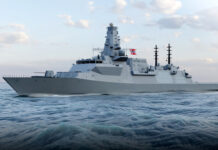BAE Systems is preparing its Herne extra-large autonomous underwater vehicle (XLAUV) for market in 2026, bringing to customers the vehicle’s intelligence, surveillance, and reconnaissance (ISR) payload. However, with Herne designed as a modular vehicle adaptable to evolving requirements, other capabilities can be added to meet emerging threats, Scott Jamieson, the company’s managing director for defence solutions, told ESD at the DSEI 2025 defence exposition in London on 9 September.
“We’re really focused on, by the end of 2026, there being a finished product that a customer can say ‘I’ll take that’,” said Jamieson. The capabilities the company aims to have ready for market are the ISR performance, plus the vehicle’s range, power and speed, he added.
In understanding customer requirements, Jamieson said, “We heard loud and clear that ISR initially was a crucial capability, so we’re focused on that.”
Illustrating prospective requirements, the UK’s Strategic Defence Review (SDR), published in June 2025, set out the UK Royal Navy’s (RN’s) two-phase ‘Atlantic Bastion’ concept, with both phases requiring sustained ISR and wider sensing capability from uncrewed systems, particularly uncrewed underwater vehicles (UUVs). The first phase, ‘Atlantic Net’, focuses on UUVs providing massed presence; the RN is aiming to see this capability deployed from 2026. The second phase, ‘Atlantic Bastion’, involves uncrewed platforms like UUVs integrating with crewed platforms like the RN’s incoming Type 26 anti-submarine warfare (ASW) frigates to broaden the ASW coverage.
The fully autonomous Herne is one such UUV. Jamieson explained how its capabilities meet these requirements. “In terms of the ISR capability, the ability to sit on station for a prolonged time period and the ability to transmit information are key,” he said. “We’re watching how the [‘Atlantic Bastion’] requirements develop, but we’re sure Herne should be in that mix somewhere.”
In readying Herne for market, Jamieson said the two primary steps are final design verification and final version manufacture. This involves incorporating trials feedback into the demonstrator design, ensuring everything on board operates in a fully integrated manner, finalising the design and building the final version.
The company aims to manufacture in 2026 the vehicles available for customer purchase. While considering build of at least one vehicle, this decision will be shaped by an assessment of the level of activity and interest in the customer base at that point, Jamieson explained.
A technical demonstrator version of Herne was trialled off Portland, UK, in November 2024. Since the trials significant shape, frame design and internal structure developments have been introduced; this latest version, representative of the final product, was displayed at DSEI 2025. Further design decisions and customer requirements could see subtle adjustments made to the final design.
In the future, with Herne’s design and payload options based around modularity and flexibility, other capabilities that could be integrated if required include maximising payload space for power sources or providing capacity to launch torpedoes, Sara Thurman, head of future solutions at BAE Systems Defence Solutions, said during a DSEI 2025 media briefing. The flexible payload also allows Herne to potentially be switched rapidly from one task to another. “We can interact between ASW, CNI [critical national infradtructure] and ISR missions quickly,” Thurman added.
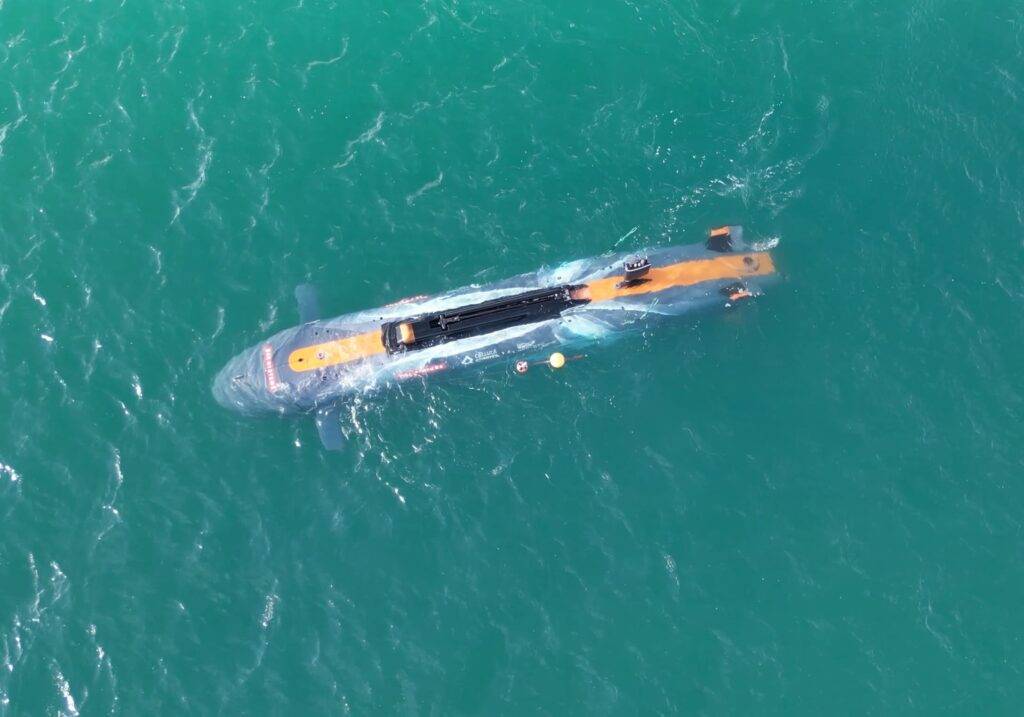



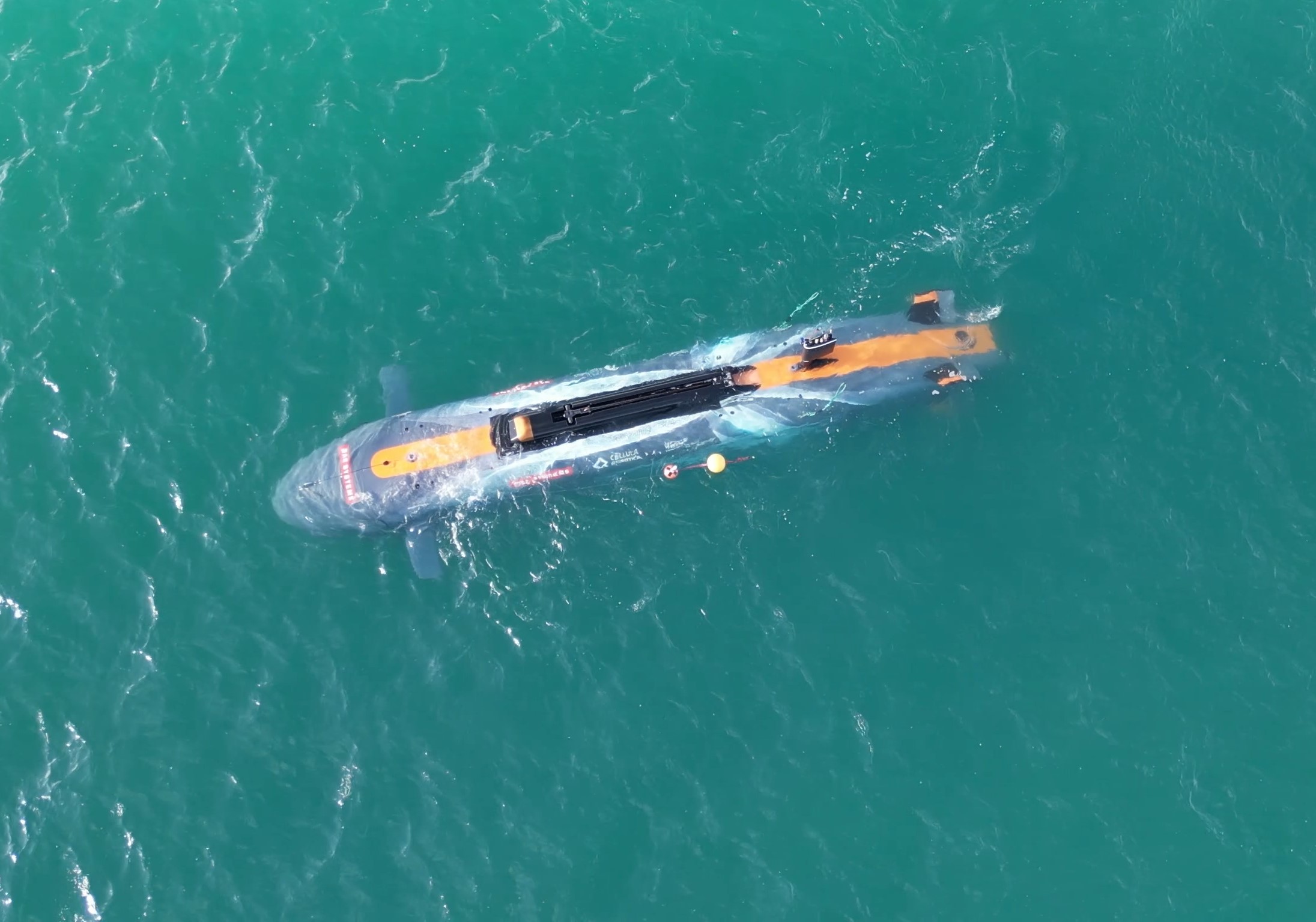




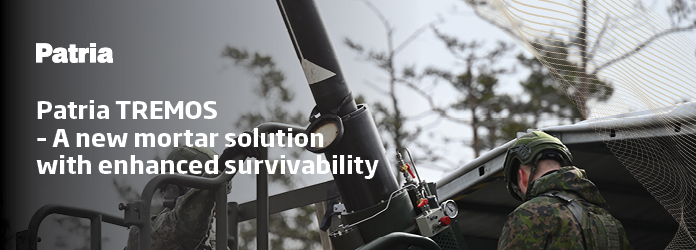

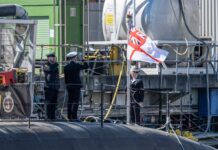




![The British naval construction sector: Status report Construction of SSN-AUKUS submarines will support the UK’s submarine industrial base for decades ahead. [Crown Copyright 2024]](https://euro-sd.com/wp-content/uploads/2025/09/4_SSN-AUKUS-Kopie-218x150.jpg)

![The Combat Air Flying Demonstrator: Rehearsing and preparing for GCAP These These images of Tempest studies do not represent an evolution, since several of them were undertaken in parallel. They do represent different emphases on elements of the requirement. The first to be seen was the ‘Pregnant Pelican’, as unveiled at Farnborough in 2018. The Concept Class Five aircraft was unveiled at Farnborough in 2022, while the Lambda-winged aircraft (the P189-17B) was first seen at DSEI Japan the following year. The so-called ‘Big Delta’ was revealed at Farnborough in 2024. [BAE Systems; Ministère des Armées/SITTA]of Tempest studies do not represent an evolution, since several of them were undertaken in parallel. They do represent different emphases on elements of the requirement. The first to be seen was the ‘Pregnant Pelican’, as unveiled at Farnborough in 2018. The Concept Class Five aircraft was unveiled at Farnborough in 2022, while the Lambda-winged aircraft (the P189-17B) was first seen at DSEI Japan the following year. The so-called ‘Big Delta’ was revealed at Farnborough in 2024. [BAE Systems; Ministère des Armées/SITTA]](https://euro-sd.com/wp-content/uploads/2025/09/7D-RS171720_2620-LONDON-24-IMAGE-01-2-Kopie-218x150.jpg)
